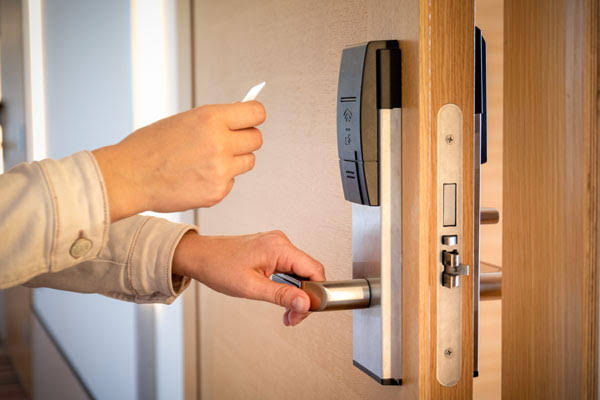Electric Strikes: Everything You Need To Know

The electric strikes was first developed in the late 1880s to allow tenants of high-rise buildings in New York City to access and physically unlock the door from within their apartments. Today, they are used in almost all apartments and office buildings across the world. Here’s what you need to know.
What are electric strikes?
Electric strikes are electromechanical door locking mechanisms, which means they’re mechanical locks with added electrical capability. Electric strikes are frequently used in conjunction with other locking mechanisms, such as a lockset or a panic bar. They are mounted on the inside of the door frame in place of the traditional lock strike plate. The strike receives electrical power, which holds the latch or locks the bolt in position and keeps the door locked until the release system is engaged.
What are the different ways an electric strike may be used?
In practice, an electric strike popularly has three major configurations:
- Fail-secure: Applying an electric current to the strike will unlock it in this setup. In this configuration, if there is a power outage, the strike will remain locked, but the mechanical lock may normally be used to unlock the door from the inside for exit from the secure side. Also known as non-fail safe or fail-locked, this is the most popularly used configuration.
Read Also: Benefits and Uses of Shortwave Radio
- Fail-safe: Applying an electric current to the strike in this setup will cause it to lock. It works in the same way as a magnetic lock. If there is a power outage, the door can be pushed or dragged open. This configuration is also known as fail-open.
- Hold-open: An electric current is provided to the strike in this setup, causing it to unlock and remain unlocked until it is utilized. Once the strike has been utilized, it returns to its normal locked position. This may be seen in a variety of residential, commercial, and industrial settings.
How does one operate an electric strike?
A very small motor within the electric strike is controlled by electricity. This motor releases the metal component that holds the door in place when it is triggered. The door will only allow movement and become operational once the electric trigger has been received.
A variety of triggers can start the electric strike’s motor, including:
- A card reader that accepts electronic cards
- A number pad
- A keychain
- A sensor that can be used wirelessly
Remember that an electric strike needs the use of another device, such as a lockset or a panic bar. If the power goes out, these mechanisms ensure that those within the building can unlock the door.
What are the benefits of using an electric strike?
Here are some of the benefits of using an electric strike:
- Because an electric strike can be quickly operated from the interior of the structure, it is considerably less likely to create exit delays.
- The lockset can be kept closed, but the strike can be released, allowing the power operator to swing the door open freely.
- Can be used on a door with an automated opener as a release.
- The ability to be fail-safe or fail-secure allows for a larger range of applications.
- Doors with electronic locks will stay securely secured even if the power goes off. The panic bar can be pressed by anybody within the building to unlock the door.
In short, electric strikes are simple to use and install for security professionals, which come with a lot of advantages. This makes them an excellent choice to use for your entryway, so take the necessary steps when looking for the right one by shopping for RS Online electric strikes now!



![[pii_email_95fb429ddab3b9357c9f] Error Code](https://techdailymagazines.com/wp-content/uploads/2021/09/PicsArt_09-06-12.15.44-390x220.jpg)

